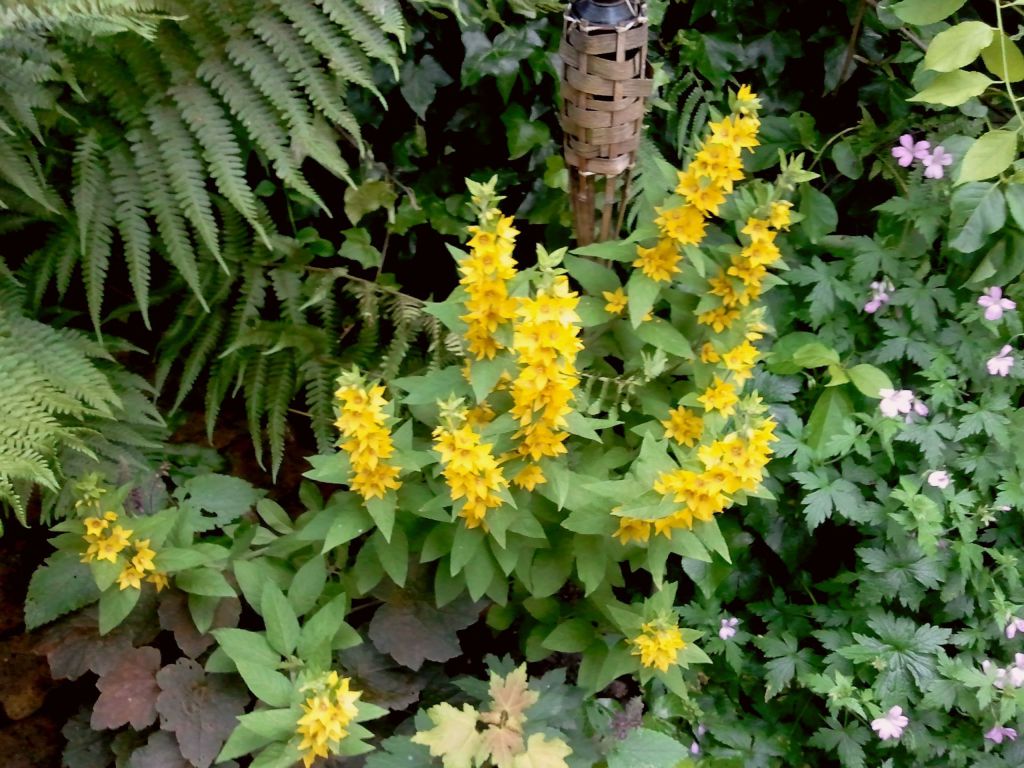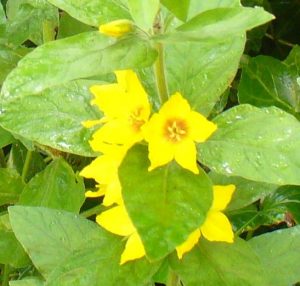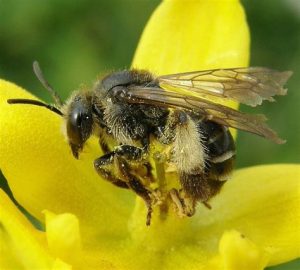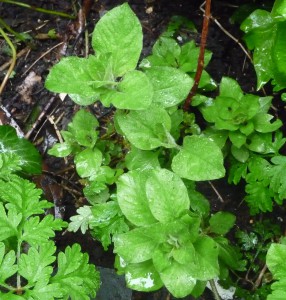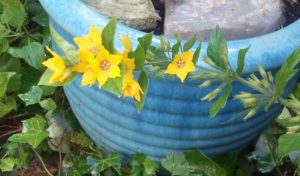YELLOW LOOSESTRIFE (Lysimachia vulgaris)
England, Ireland and parts of Europe
This native wildflower sends up long stems of rich YELLOW cup shaped flowers through July and August. It does best in boggy soils, & is considered a marginal plant. It spreads by creeping rhizomes & can be invasive. perennial
grows in shady places near water, marhes, streams avoiding acid soils.
How Did It Get Its Name
‘The name “Loosestrife” literally means to “lose strife”. Plants in the genus are said to have calming properties, and are named after King Lysimachus, the King of Macedonia, who fed ‘loosestrife’ plants to his cows when they became agitated. Loosetrifes were also hung around the necks of cows to deter flying insects, and were also brought into homes and burned to get rid of infestations of flies.’ BBC Gardener’s World Magazine
Medicinal Uses
 ‘An astringent herb, yellow loosestrife is principally used to treat gastro-intestinal conditions such as diarrhoea and dysentery, to stop internal and external bleeding and to cleanse wounds. The herb is astringent, demulcent and expectorant. It is harvested when in flower in July and dried for later use. The plant can be used internally or externally and is useful in checking bleeding of the mouth, nose and wounds, restraining profuse haemorrhages of any kind and in the treatment of diarrhoea. It makes a serviceable mouthwash for treating sore gums and mouth ulcers.’
‘An astringent herb, yellow loosestrife is principally used to treat gastro-intestinal conditions such as diarrhoea and dysentery, to stop internal and external bleeding and to cleanse wounds. The herb is astringent, demulcent and expectorant. It is harvested when in flower in July and dried for later use. The plant can be used internally or externally and is useful in checking bleeding of the mouth, nose and wounds, restraining profuse haemorrhages of any kind and in the treatment of diarrhoea. It makes a serviceable mouthwash for treating sore gums and mouth ulcers.’
Medicinal Herbs: YELLOW LOOSESTRIFE – Lysimachia vulgaris
Other Uses
The yellow flowers can be used as a dye; a brown dye can be made from the rhizomes. The growing plant repels gnats and flies, and can be burnt in the house in order to remove these insects.
Bee’s Favourite
 Lysimachia vulgaris has its own named bee, the Yellow Loosestrife Bee. The plant is the sole food source for this small solitary bee, which collects oils produced by the plant to help waterproof its nest. Various species of wasp pollinate the flowers, and the plant has been designated RHS Perfect for Pollinators.
Lysimachia vulgaris has its own named bee, the Yellow Loosestrife Bee. The plant is the sole food source for this small solitary bee, which collects oils produced by the plant to help waterproof its nest. Various species of wasp pollinate the flowers, and the plant has been designated RHS Perfect for Pollinators.
https://www.puddleplants.co.uk/product/yellow-loosestrife-lysimachia-vulgaris/?page&product=yellow-loosestrife-lysimachia-vulgaris&post_type=product
Our Yellow Loosestrife, which lived in a pot outside Tom’s back door, was planted in the ground near the back of the garden flat. Each year when it regrew after winter its stems were smaller. After 4 years it did not return. No wasps were ever seen pollinating our Lysimachia, & sadly, no lovely Yellow Loosestrife Bee ever put in an appearance.
Other names: Almindelig fredlos (Danish), Brealian leana (Irish), Fredlos (Norwegian), Garden Loosestrife, Gele wederik, Gewohnlicher Gilbweiderich (German), Golden Loosestrife, Herb Willow, Loosestrife, Lisimaquia Amarilla (Spanish), Lysimaque Vulgaire (French), Ranta-alpi (Finnish), Salicaire du jardin, Strandlysing (Swedish), Willow Herb, Willow Wort, Yellow Willowherb, Willow-wort, Wood Pimpernel.
Invasive
In situations to its liking, when introduced, this plant has become invasive. Its creeping rhizomes have made it a problem plant for states in the northeast & northwest of North America.
